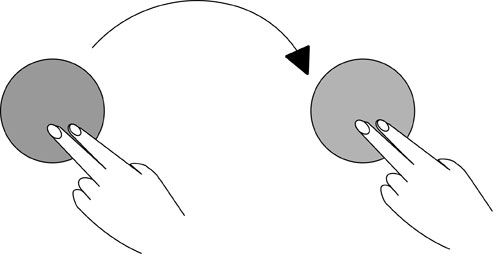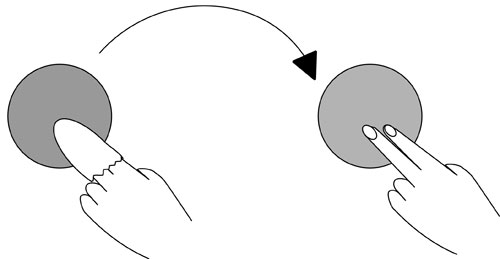How good is your toilet paper?
Class practical or guided demonstration
This investigation follows the transfer of a harmless microorganism from an agar plate, via toilet paper to our hands. This models the transmission of faecal microbes after using the lavatory, and allows us to assess the efficacy of using toilet paper and of hand washing as part of our daily hygiene regime. You can use this method to evaluate different brands and thicknesses of toilet paper and/ or different types of soap. This is an opportunity to think about the commercial application of an investigation and the social significance of its results.
![]() This practical is based on an investigation called
This practical is based on an investigation called ![]() Microbes and personal hygiene published in Practical Microbiology for Secondary Schools © Society for General Microbiology.
Microbes and personal hygiene published in Practical Microbiology for Secondary Schools © Society for General Microbiology.
Lesson organisation
This procedure requires 6 agar plates per working group, with 3 lawn cultures of Saccharomyces cerevisiae and 3 sterile malt extract agar plates to inoculate.
Consistency of approach is important, so it is difficult to ask each working group to take just one lawn plate and complete one stage of the investigation. You could set it up as a guided demonstration, with one or two students taking a more active part and everyone observing.
Apparatus and Chemicals
For the class – set up by technician/ teacher:
Lawn plates of Saccharomyces cerevisiae on malt extract agar, 3 per group
Malt extract agar plates, 3 per group
Different brands of toilet paper, several
Different types of soap, several
Autoclave bag
For each group of students:
Paper towels, 4
Adhesive tape
Marker pen
Health and Safety and Technical notes
Carry out a full risk assessment before planning any work in microbiology (see Note 1 for more details).
Check the standard techniques for more details of Aseptic techniques, Making up nutrient agars, Pouring an agar plate, Making a spread or 'lawn' plate and Incubating and viewing plates.
The procedure involves several stages of hand-washing, so should not be carried out by students with known skin sensitivities.
1 Before embarking on any practical microbiological investigation carry out a full risk assessment. For detailed safety information on the use of micro-organisms in schools and colleges, refer to Basic Practical Microbiology – A Manual (BPM) available free from the Society for General Microbiology (email This email address is being protected from spambots. You need JavaScript enabled to view it.) or go to the safety area of the SGM website (www.microbiologyonline.org.uk/safety.html), or refer to the CLEAPSS Laboratory Handbook, section 15.
Procedure
SAFETY:
Make sure students wash their hands thoroughly before starting the procedure to avoid culturing organisms already on the skin.
Ensure all used toilet paper goes immediately into the autoclave bag.
Make sure all students wash their hands thoroughly at the end of the procedure.
Tape the lids on, but do not seal the agar plates before incubating upside down at 20-25 °C. Do not open the agar plates to count the colonies.
Preparation
a Prepare malt extract agar plates. See Standard techniques: Making up nutrient agars and Pouring an agar plate.
b Prepare lawn cultures of Saccharomyces cerevisiae. See Standard techniques: Making a spread or 'lawn plate'.
c Collect samples of different kinds of toilet paper and different brands of soap.
Investigation
d Label the bases of three sterile malt agar plates with name, date and A, B or C.
e Wash hands thoroughly using hot water and soap, then dry them on a clean paper towel.
f Open one lawn plate of yeast (Saccharomyces cerevisiae). Wipe the surface lightly with two fingers.

g Lift the lid of plate A. Touch the agar surface lightly with the same two fingers. Quickly replace the lid.
h Wash hands thoroughly again, and dry on a clean paper towel.
i Wrap two fingers with one layer of one kind of toilet paper.
j Open another lawn plate of yeast. Wipe fingers over the surface in the same way as before.

k Remove the toilet paper and put it straight into the autoclave bag provided.
l Lift the lid of plate B. Touch the agar surface lightly and quickly replace the lid.
m Wash hands thoroughly again.
n Wrap fingers again in the same kind of toilet paper, wipe wrapped fingers on a third lawn plate of yeast, put the toilet paper into the autoclave bag, wash hands thoroughly with a particular soap, and then touch the surface of dish C with washed fingers. Replace the lid quickly.
o Tape the lid on the agar plate. Incubate inverted for 2-3 days at room temperature (20-25 °C).
p Examine the agar plate without opening it.
Teaching notes
Although Saccharomyces cerevisiae is ‘safe’, you should still adopt all the usual precautions to establish good practice for occasions when the microbes may be more hazardous.
Note that sometimes washing hands ‘frees up’ naturally-occurring flora on the skin. This may give more microbial growth on the agar than an unwashed hand! One way of demonstrating this is to culture the results of dry finger dabs and wet hand finger dabs – before using soap. This observation demonstrates the importance in personal hygiene of drying your hands after washing, as well as the importance of using soap.
Health & Safety checked, May 2009
Downloads
Download the student sheet ![]() How good is your toilet paper? with questions and answers.
How good is your toilet paper? with questions and answers.
Web links
www.microbiologyonline.org.uk/teachers/resources
Society for General Microbiology – source of Basic Practical Microbiology, an excellent manual of laboratory techniques and Practical Microbiology for Secondary Schools, a selection of tried and tested practicals using microorganisms. These include Microbes and personal hygiene.
www.microbiologyonline.org.uk
MiSAC (Microbiology in Schools Advisory Committee) is supported by the Society for General Microbiology (see above) and their websites include more safety information and a link to ask for advice by email.
(Websites accessed October 2011)


